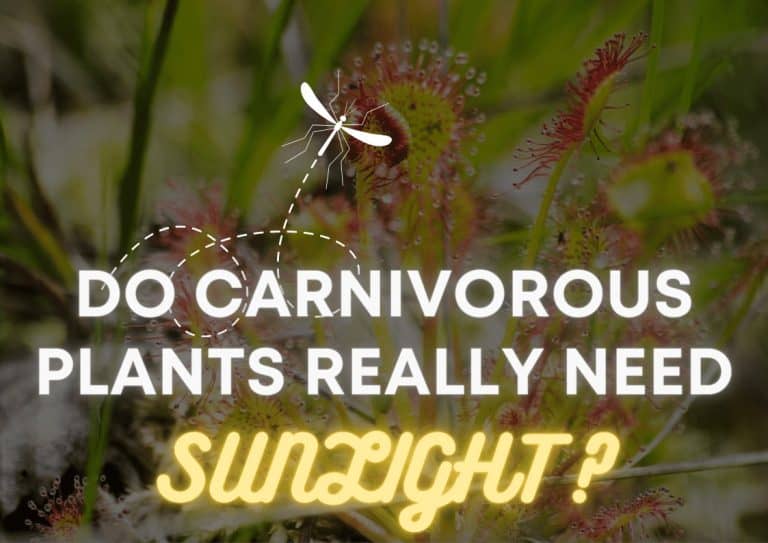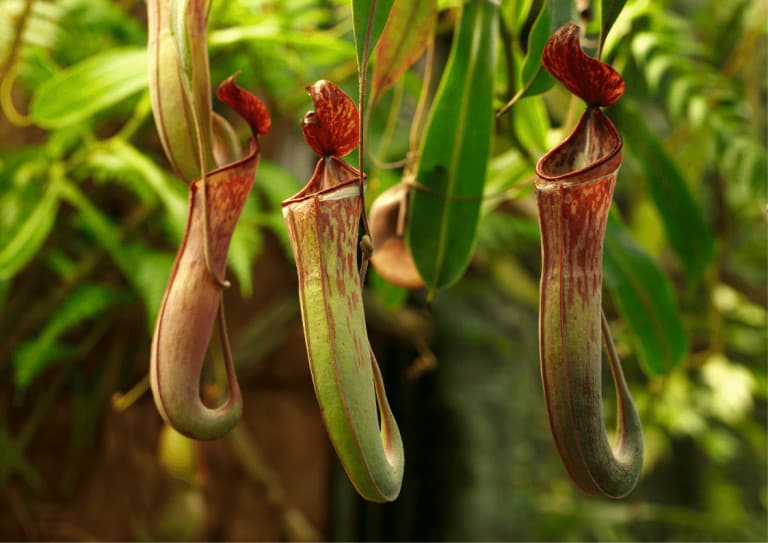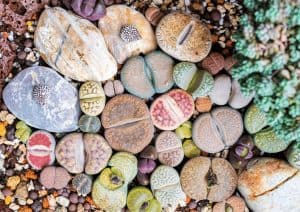Do Carnivorous Plants Need Sunlight? (Or Are Bugs Enough?)
- Lakeisha Ethans
- August 17, 2022
If you buy something using the retail links in our articles, sometimes we earn a small affiliate commission. This does not impact the products we recommend.
One question that crops up amongst new carnivorous plant owners is whether it’s possible for their plants to sustain themselves on prey caught in traps alone, and if so can they go without the need for sunlight and photosynthesis altogether?
However, in asking this question means there is a fundamental misunderstanding of how energy and nutrients are each obtained by plants.
Like any other plant group, carnivorous plants need sunlight to produce glucose which the plant uses as fuel. Prey caught in traps on the other hand act as a supplementary source of nutrients, fertilizer if you will, to help the plant to synthesize amino acids, proteins and chlorophyll.
Most plants obtain their nutrition from the substrate they grow in and water they absorb, carnivorous plants are no different but have also evolved traps as an additional means to collect nutrients
So in addition to consuming invertebrates as a source of nutrients, carnivorous plants still need sunlight to generate the vast majority of their sustenance through the process of photosynthesis.

Do carnivorous plants need to catch insects to survive?
When kept as a houseplant carnivorous plants don’t necessarily need to catch insects to survive. This is because the potting mix and liquid feed you provide them will allow the root system to absorb all of the nutrients the plants need.
This is in stark contrast to carnivorous plants growing in their natural habitats where the soils offer very little available nitrogen and other nutrients.
In fact nutrients gathered from prey that fall into Carnivorous plant traps in the wild are thought to account for between 50% – 71% of the Nitrogen they need to survive. A significant proportion!
The effects of carnivory in pitcher plants was the subject of another study submitted to the Annals of Botany Journal. In it scientists starved plants of all nutrients normally provided by water and soil, and fed them only through invertebrates such as wasps, ants and flies.
They discovered that nitrogen received from prey sources aided the plant’s ability to photosynthesise efficiently by increasing chlorophyll, pigment-protein complexes and Rubisco content (the red coloring in pitchers).
This leads us to believe that in their natural habitat carnivorous plants do have a need to catch prey if they wish to survive.
Carnivorous plant traps are actually modified leaf structures and so contribute to energy yielded from photosynthesis at the same time as capturing prey.
How much sun do carnivorous plants need?
Many carnivorous plants grow in savanna-like environments, swamplands and other bright natural spaces that are barely shaded by trees and shrubs.
So access to sunlight is very important for a carnivorous plant’s survival. The more it can photosynthesize, the more leaves or growths it can produce during growing seasons which then allows the plant to have plenty of stored-up energy going into periods of dormancy/cold seasons.
If you keep carnivorous plants indoors they will require six hours of sun daily as an absolute minimum. Many species prefer longer durations, ranging between 10 to 16 hours per day!
As a general rule most carnivorous plants need as much sunlight as you can feasibly offer them.
Good access to sunlight can even help plants kept indoors withstand less favorable environmental or horticultural factors, as the energy gained can make up for various errors in care.

How can you provide sufficient light to a carnivorous plant indoors?
Place them right next to windows that face south if you’re in the Northern Hemisphere and vice-versa for the Southern Hemisphere. Keeping them out of any rays that are magnified by glass will reduce the chance of foliage experiencing sunburn.
If you don’t think your plants will be able to get that much sunlight in your house, you could opt to use artificial light sources such as grow lights.
Full spectrum lights designed to provide all the wavelengths of light your indoor plants needs to develop healthily can be purchased online at relatively low cost.
These units don’t need to be expensive or bulky and can be as simple as retrofitting a table lamp with a full spectrum LED bulb.
Just be mindful that you’ll need to keep the lamp powered for a long period each day, and that electricity costs might become a factor should you have a large collection of plants to keep illuminated.
When using LED lights for this purpose, set them about six inches above the plants in question, and remember to turn them off at night to simulate a natural cycle.
What are some signs that a carnivorous plant isn’t getting enough light
Carnivorous plants give off many different symptoms of lack of sunlight, making it easy to notice when something is wrong.
This is helpful because even a slight deficiency of sunlight for plants in this family can cause them to wilt and die. In extreme cases, attempting to push out new growth in a shady environment can cause a plant to enter dormancy.
The most obvious sign of a lack of sunlight can be seen in a plant’s leaves.
Carnivorous plants that lack exposure to sufficient light will develop rigid and upright foliage with thin and lanky leaves. This happens because the foliage attempts to stretch itself out in an attempt to reach a suitable light source, causing a “leggy” structure.
You’ll also likely notice green and yellow discoloration on leaves and a notable lack of the rich reddish or purplish colors that most carnivorous plants are known for.
Even with most robust carnivorous plants, it’s best to err on caution when it comes to provisioning light. If you’re in any doubt about whether or not your plant’s getting the light it needs, increase the amount you provide and monitor your plant for any negative or positive changes.
It’s worth noting too that you should avoid sudden changes (such as moving from 6hrs of low light exposure daily to 12hrs of full sun) to your plant’s environmental conditions when possible.
While one sudden change won’t kill a plant, it can cause it to go into shock and require a brief non-active period to adjust to its new environment.
So unless your carnivorous flora desperately needs a quick shift, increasing light exposure gradually as required is a good idea.
Round up
Like all other plants, carnivorous plants need sunlight to grow and survive. The necessity to photosynthesize and produce glucose is separate from the acquisition of nutrients which the plants gather via their iconic trap structures as well as the root system.
Full sun is required by most carnivorous plants to survive, with a bare minimum of six hours exposure being recommended each day for plants kept indoors.

Lakeisha Ethans
Houseplant Writer
Mother to two humans and hundreds of plant babies. Lakeisha uses her 15 years of experience as a content writer to specialise in simplifying what you need to know to grow and care for all indoor plants.
Similar Posts
5 Of The Worst Indoor Plants For Allergies (Stop Your Sneezing!)
From resipiratory irritation to physical damage to your skin. It pays to be mindful of allergic reactions that some innocent looking houseplants can cause.
Patience Is A Virtue: How Long Do Lithops Take To Grow?
Lithops plants can live for a very long time, but how long do they take to grow? How long can you expect to wait before your Lithops is mature?



